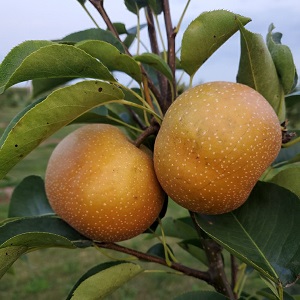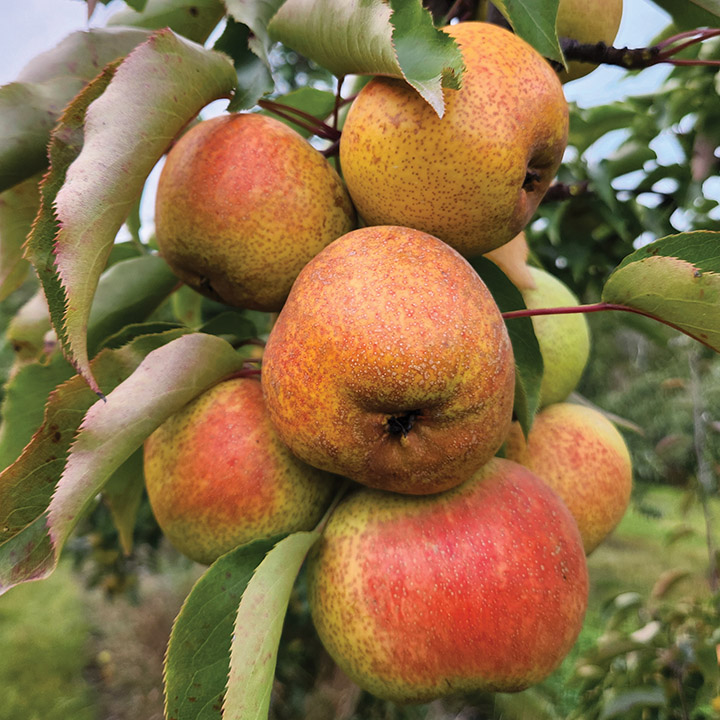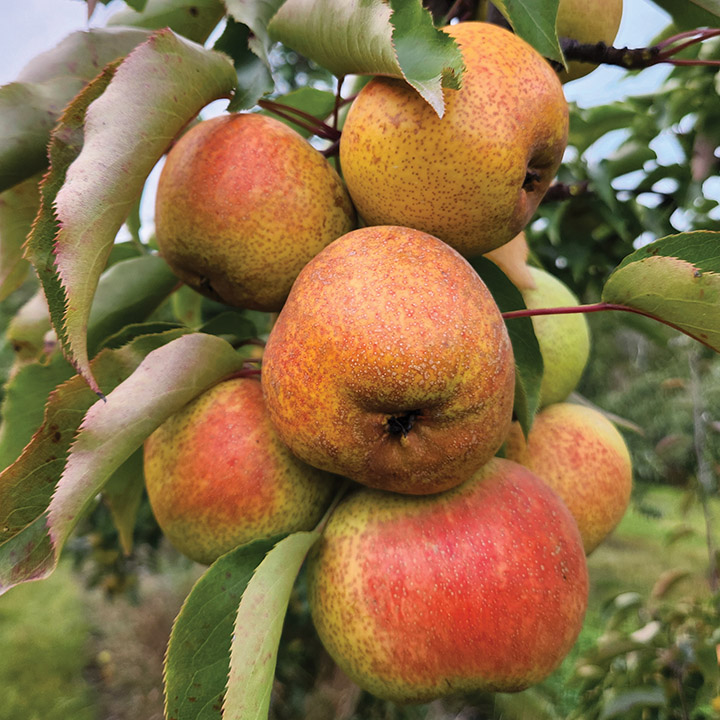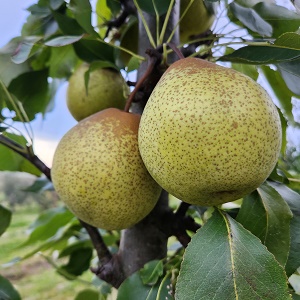Asian Pear : HAYATAMA Large Semi-Dwarf (OHxF97) (Orchard Grade)
$37.95
An 'orchard grade' is a tree that may be somewhat shorter, slightly crooked, or a bit scratched, or for some other reason is not a perfect front lawn specimen. These trees will work just as well in an orchard as a first or number one would, since they still produce the very same fruit.
A little known variety that deserves more recognition, Hayatama is one of our favourites. A medium-sized, orange-brown pear with an exotic tropical fruit flavour, this thirst-quenching juice-ball is the first Asian to ripen – conveniently timed to meet pent-up demand for fresh fruit. Mike Bleho finds it to be a best seller at his Montreal market stand.
SEMI-FERTILE* | ZONE 5 | HARVEST: MID-LATE AUG.
Only logged in customers who have purchased this product may leave a review.
Growing Tips
Asian Pears are very precocious which means they tend to produce quite heavily when only a few years old. This can result in a weakened tree as all its energy is going into producing fruit instead of forming a sturdy tree. For this reason we recommend removing most of the fruit for the first several years.
All European (regular) and Asian pears will pollinate each other providing their bloom times overlap. Generally you can go by the expected harvest time, meaning only the very early and the very late might not be compatible with each other. However, since Asian pears, on average, bloom earlier than Europeans, you might pair an early European with a mid or late Asian.




Reviews
There are no reviews yet.